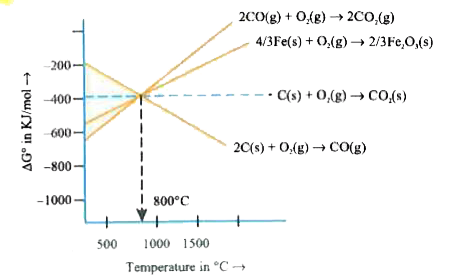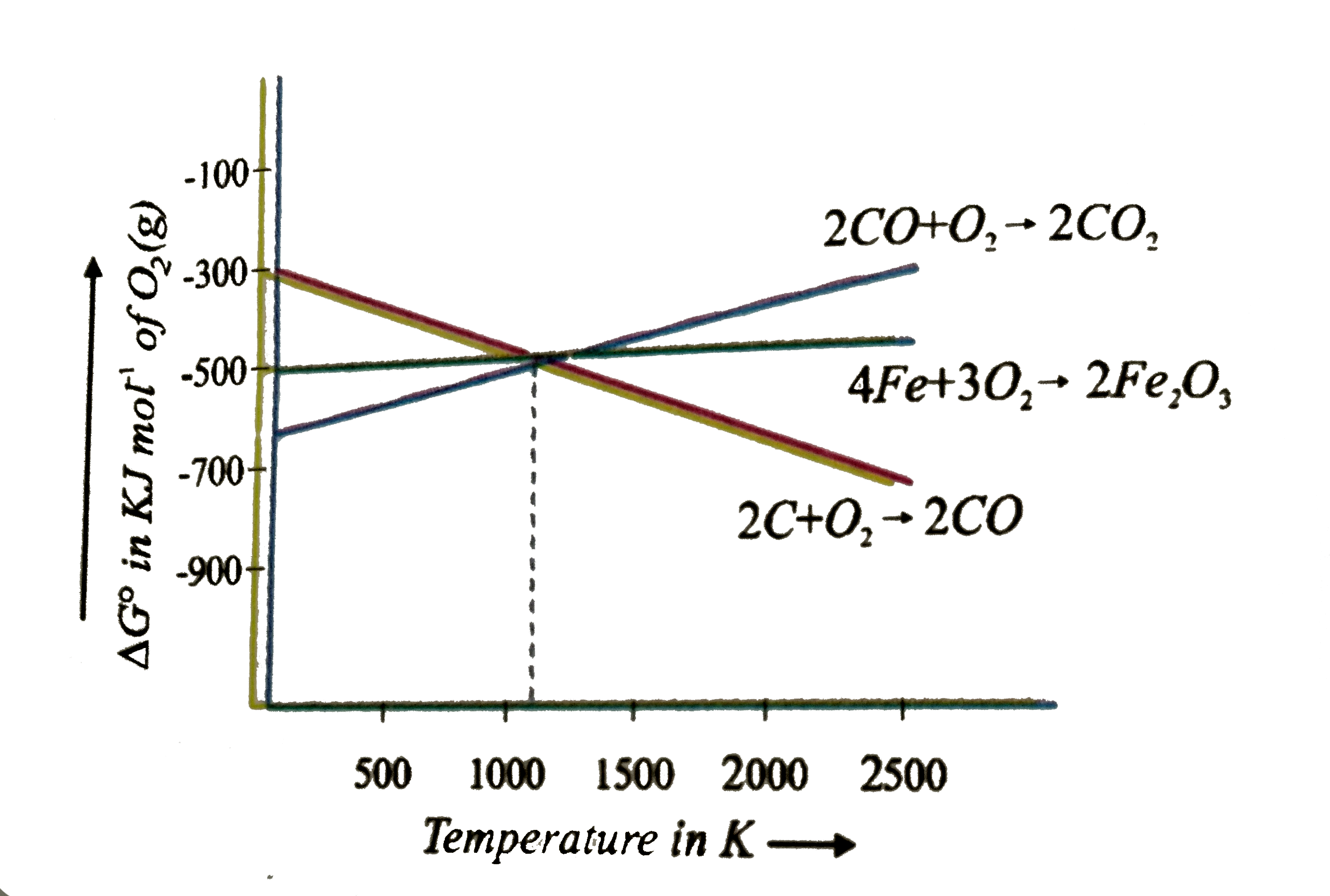Above 1073 K, ………… reduces FeO to Fe while below 1073K, …………… reduces Fe2O3 to Fe.
The correct Answer is:coke , CO
Step by step video, text & image solution for Above 1073 K, ………… reduces FeO to Fe while below 1073K, …………… reduces Fe_ 2 O _ 3 to Fe. by Chemistry experts to help you in doubts & scoring excellent marks in Class 12 exams.
Topper's Solved these Questions
- BOOK - PRADEEPCHAPTER - GENERAL PRINCIPLES AND PROCESSES OF ISOLATION OF ELEMENTS EXERCISE - CONCEPTUAL QUESTIONS14videos
GENERAL PRINCIPLES AND PROCESSES OF ISOLATION OF ELEMENTS
- BOOK - PRADEEPCHAPTER - GENERAL PRINCIPLES AND PROCESSES OF ISOLATION OF ELEMENTS EXERCISE - NCERT QUESTIONS AND EXERCISES WITH ANSWERS (NCERT INTEXT SOLVED QUESTIONS)5videos
GENERAL PRINCIPLES AND PROCESSES OF ISOLATION OF ELEMENTS
- BOOK - PRADEEPCHAPTER - GENERAL PRINCIPLES AND PROCESSES OF ISOLATION OF ELEMENTS EXERCISE - TEST YOUR GRIP (I.MULTIPLE CHOICE QUESTIONS)18videos
GENERAL PRINCIPLES AND PROCESSES OF ISOLATION OF ELEMENTS
- BOOK - PRADEEPCHAPTER - ELECTROCHEMISTRYEXERCISE - IMPORTANT QUESTIONS FOR BOARD EXAMINATION25videos
ELECTROCHEMISTRY
- BOOK - PRADEEPCHAPTER - HALOALKANES AND HALOARENESEXERCISE - IMPORTANT QUESTIONS FOR BOARD EXAMINATION22videos
HALOALKANES AND HALOARENES
Similar Questions
Fe3+ is reduced to Fe3+ by sing
View SolutionAssertion. Both C and CO can reduce FeO to Fe but at temperatures above 1073 K it is C which is a better reducing agent than CO while below 1073 K, it is CO which is a better reducing agent than C.
Reason. Above 1073 K, ΔfG∘ for CO from C is more negative than that of FeO from Fe while below 1073 K, ΔfG∘CO2 from CO is more negative that that of FeO from Fe.View Solution
Knowledge Check
- Question 1 - Select One
Correct statements form the graph

I) Above 1073K, ΔG0 for the formation of Fe2O3 is less negative than ΔG0 for the formation of CO from carbon
II) Above 1073K, Carbon can reduce Fe2O3
III) Below 1073K, CO can reduce Fe2O3
IV) In blast furnace, reduction of Fe2O3 occurs in different temperature ranges with below 1073K by CO (or) above 1073K by carbonAOnly IBI, II onlyCI, II, III onlyDAll - Question 2 - Select One
Correct statements from the graph

I) Above 1073 K,ΔG0 for the formation of F2O3 is less negative than ΔG0 for the formation of CO from carbon
II) Above 1073K, Carbon can reduce Fe2O3
III) Below 1073K, CO can reduce Fe2O3
IV) In blast furnance, reduction of Fe2CO3 occurs in different temperature ranges with below 1073K by CO (or) above 1073 K by carbonAOnly IBI,II onlyCI,II,III onlyDAll - Question 3 - Select One
Reduction of Fe2O3 with CO is done below 710∘C.
ΔfGӨ is negative at this temperature , this process is spontaneous.AOnly IBI,II onlyCI,II,III onlyDAll
What volume at STP ofCO is required to reduce one mole of Fe2O3 in the following reaction Fe2O3+CO→Fe+CO2
View SolutionCabon cannot reduce Fe2O3 to Fe at a temperature below 983K because.
View SolutionCarbon cannot reduce Fe2O3 to Fe at a temperature below 983K because
View SolutionFe3+ is reduced to Fe2+ by using
View SolutionFe3+ is reduced to Fe2+ of NaOH
View Solution
